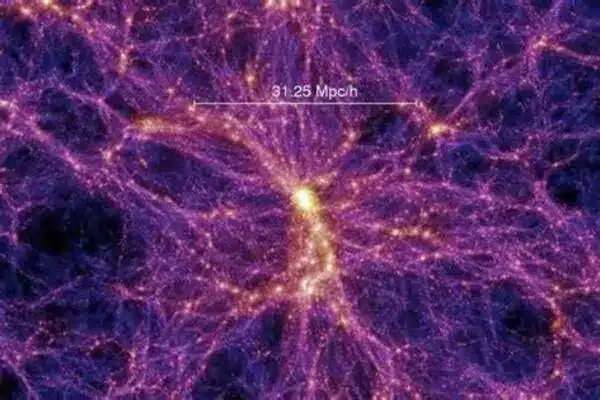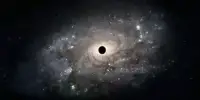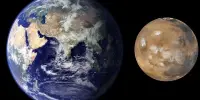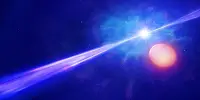The cosmic web is a large-scale structure of the universe composed of a massive network of interconnected filaments and nodes made up of galaxies, galaxy clusters, and dark matter. It is a key component of the cosmic structure and plays an important role in the dispersion of matter throughout the universe.
Galaxies are not strewn across the cosmos at random. They form not simply clusters, but enormous interconnected filamentary formations with massive barren spaces in between. This “cosmic web” began hazily and became more defined over time as gravity brought everything together.
Astronomers using NASA’s James Webb Space Telescope identified a thread-like arrangement of ten galaxies that existed only 830 million years after the big bang. The 3 million light-year-long structure is supported by a brilliant quasar, which is a galaxy with an active, supermassive black hole at its heart. The research expects the filament will eventually expand into a large cluster of galaxies, similar to the well-known Coma Cluster in the local universe.
“I was surprised by how long and narrow this filament is,” said team member Xiaohui Fan of the University of Arizona in Tucson. “I expected to find something, but I didn’t expect such a long, distinctly thin structure.”
The last two decades of cosmology research have given us a robust understanding of how the cosmic web forms and evolves. ASPIRE aims to understand how to incorporate the emergence of the earliest massive black holes into our current story of the formation of cosmic structure.
Joseph Hennawi
“This is one of the earliest filamentary structures that people have ever found associated with a distant quasar,” said Feige Wang, the program’s chief investigator from the University of Arizona in Tucson.
The ASPIRE project (A SPectroscopic survey of biased halos in the Reionization Era) made this discovery, and its major purpose is to understand the cosmic settings of the first black holes. The program will look at 25 quasars that existed in the first billion years following the big bang, known as the Epoch of Reionization.
“The last two decades of cosmology research have given us a robust understanding of how the cosmic web forms and evolves. ASPIRE aims to understand how to incorporate the emergence of the earliest massive black holes into our current story of the formation of cosmic structure,” explained team member Joseph Hennawi of the University of California, Santa Barbara.

Growing Monsters
Another part of the study investigates the properties of eight quasars in the young universe. The team confirmed that their central black holes, which existed less than a billion years after the big bang, range in mass from 600 million to 2 billion times the mass of our Sun. Astronomers continue seeking evidence to explain how these black holes could grow so large so fast.
“Two criteria must be met in order for these supermassive black holes to form in such a short period of time. First, you must sprout from a massive’seed’ black hole. Second, even if this seed starts with the mass of a thousand Suns, it still needs to accrete a million times more matter at the fastest possible rate for the rest of its life,” Wang added.
“These unprecedented observations provide crucial information about how black holes form. We’ve discovered that these black holes are located in massive young galaxies, which serve as a reservoir of fuel for their growth,” said Jinyi Yang of the University of Arizona, who is leading the ASPIRE research of black holes.
Webb also offered the greatest evidence yet of how early supermassive black holes may influence star formation in their galaxies. While supermassive black holes absorb matter, they can also generate huge outflows of matter. On a galactic scale, these winds can stretch far beyond the black hole and have a profound impact on star formation.
“Strong winds from black holes can suppress star formation in the host galaxy.” Such winds have been recorded in the neighboring cosmos, but never directly observed in the Epoch of Reionization,” Yang explained. “The scale of the wind is related to the structure of the quasar.” We can see from Webb data that such winds occurred in the early cosmos.”
















